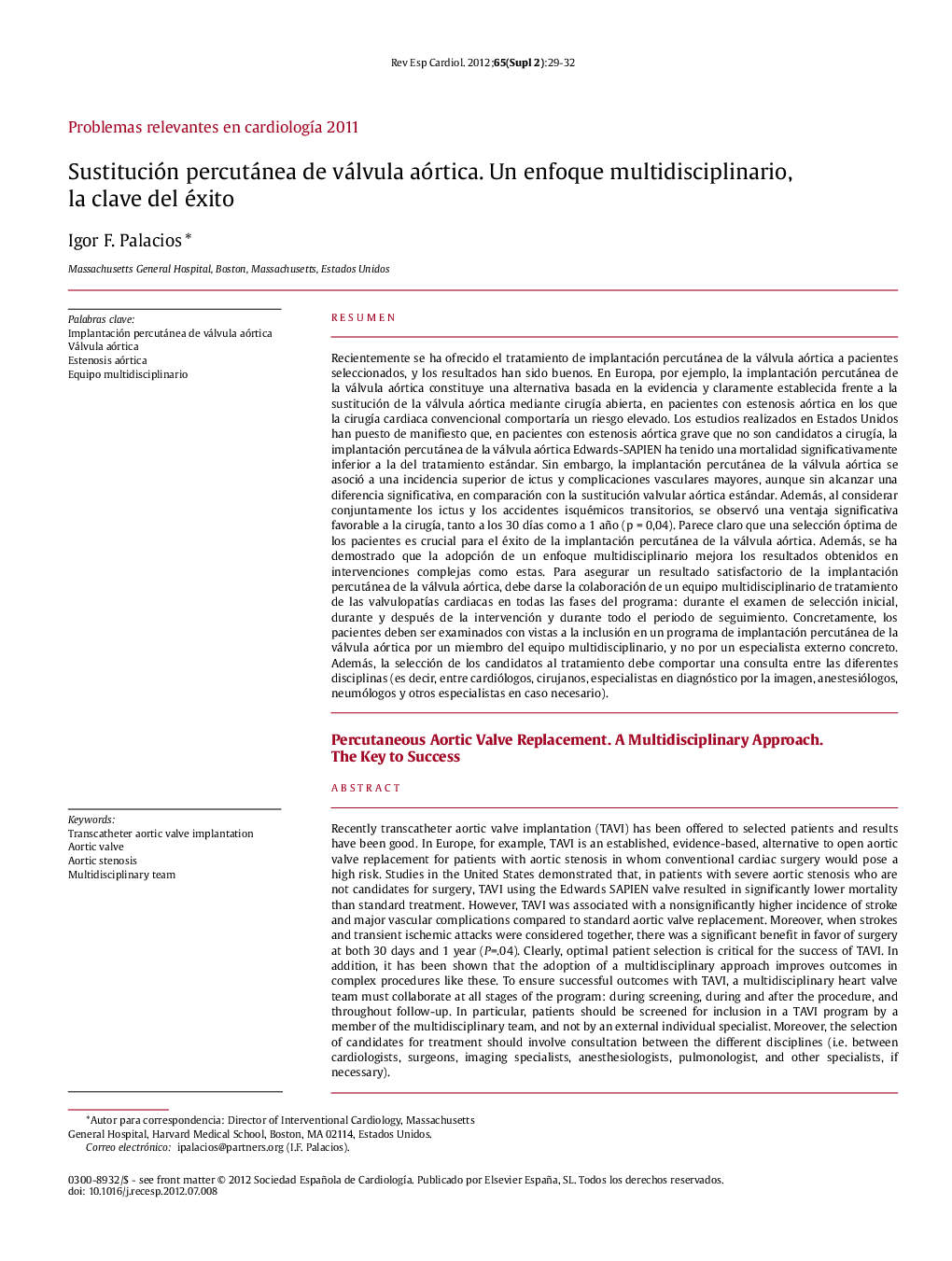| Article ID | Journal | Published Year | Pages | File Type |
|---|---|---|---|---|
| 3015218 | Revista Española de Cardiología | 2012 | 4 Pages |
Abstract
Recently transcatheter aortic valve implantation (TAVI) has been offered to selected patients and results have been good. In Europe, for example, TAVI is an established, evidence-based, alternative to open aortic valve replacement for patients with aortic stenosis in whom conventional cardiac surgery would pose a high risk. Studies in the United States demonstrated that, in patients with severe aortic stenosis who are not candidates for surgery, TAVI using the Edwards SAPIEN valve resulted in significantly lower mortality than standard treatment. However, TAVI was associated with a nonsignificantly higher incidence of stroke and major vascular complications compared to standard aortic valve replacement. Moreover, when strokes and transient ischemic attacks were considered together, there was a significant benefit in favor of surgery at both 30 days and 1 year (PÂ =Â .04). Clearly, optimal patient selection is critical for the success of TAVI. In addition, it has been shown that the adoption of a multidisciplinary approach improves outcomes in complex procedures like these. To ensure successful outcomes with TAVI, a multidisciplinary heart valve team must collaborate at all stages of the program: during screening, during and after the procedure, and throughout follow-up. In particular, patients should be screened for inclusion in a TAVI program by a member of the multidisciplinary team, and not by an external individual specialist. Moreover, the selection of candidates for treatment should involve consultation between the different disciplines (i.e. between cardiologists, surgeons, imaging specialists, anesthesiologists, pulmonologist, and other specialists, if necessary).
Keywords
Related Topics
Health Sciences
Medicine and Dentistry
Cardiology and Cardiovascular Medicine
Authors
Igor F. Palacios,
